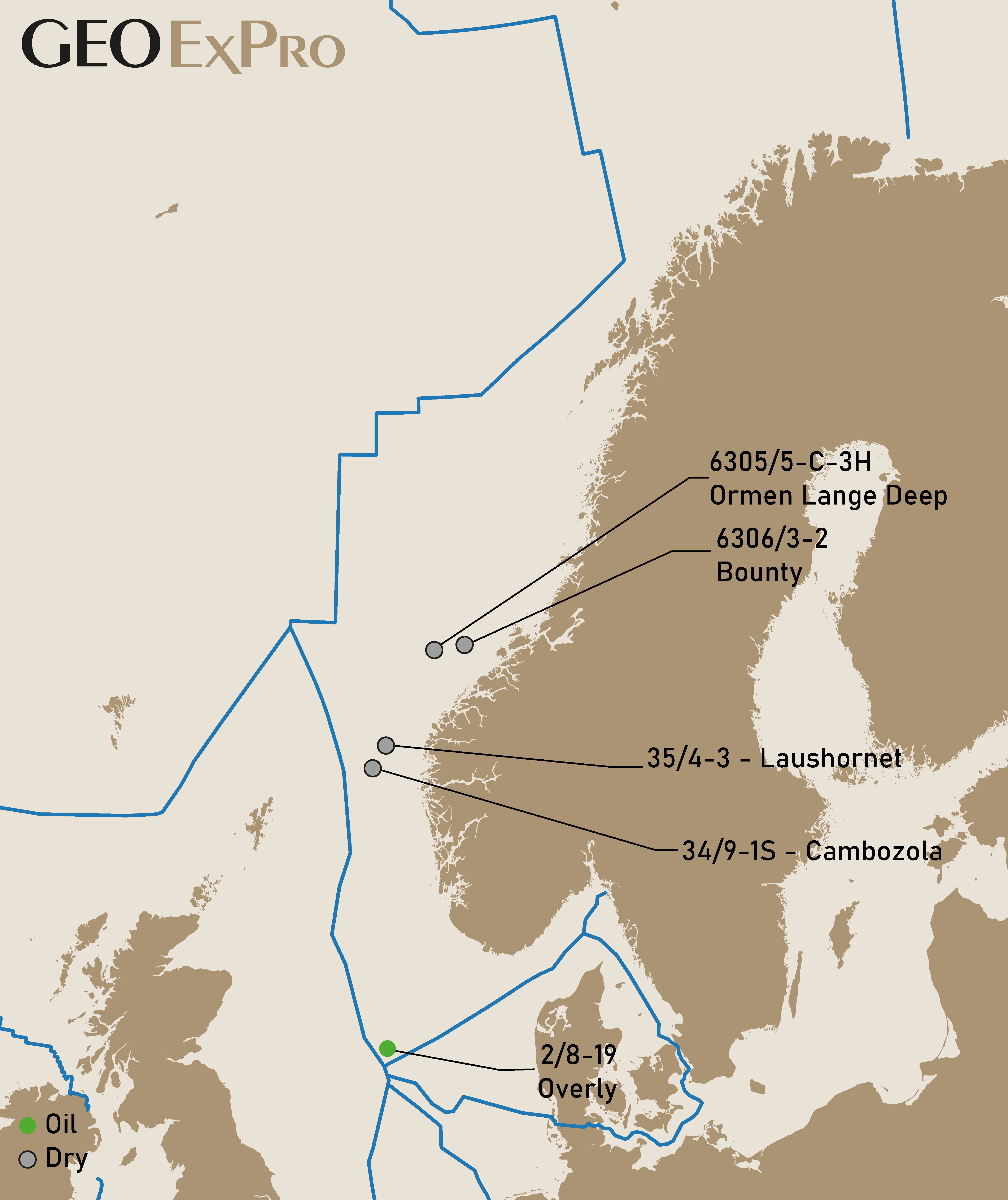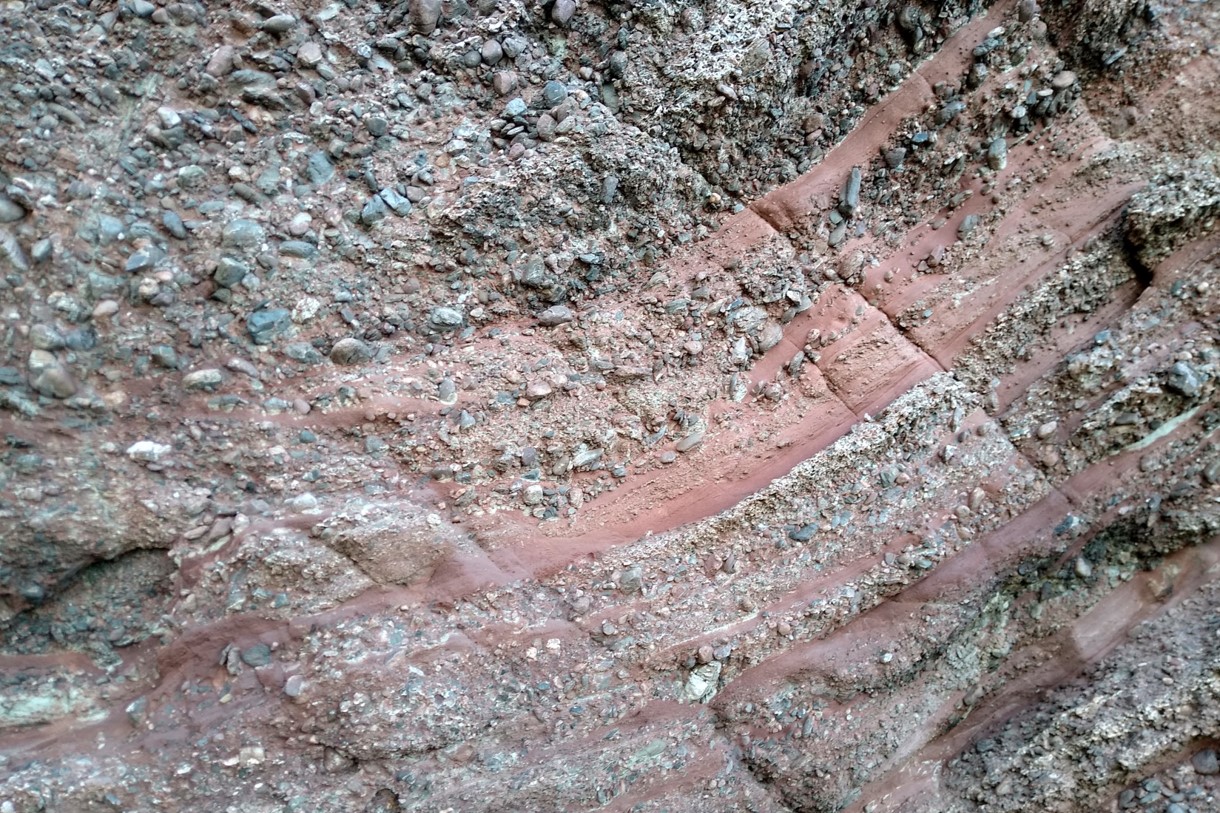When it comes to drilling more audacious exploration wells on the Norwegian Continental Shelf, Petoro is often one of the partners. As a state-owned company, Petoro’s risk profile differs from listed or private explorers, which makes it more inclined to participate in high-risk high-reward exploration projects.
Against that backdrop, it was interesting to see Petoro defining 5 wells to watch at the start of the year: PL209 Ormen Lange Deep, PL935 Bounty, PL685 Laushornet, PL1049 Cambozola and PL1085 Overly (see map).
How have the results been? Not so good. There is only one small discovery to report.

ORMEN LANGE DEEP
The Ormen Lange gas field in the Norwegian Sea belongs to the best producers across the NCS. The field is a bit of anomaly in the sense that it does not sit in a trend of similar discoveries such as the Northern North Sea Brent fields or the Middle Jurassic fields of the Norwegian Sea. Despite numerous exploration wells drilled in the vicinity of Ormen Lange, no equivalent discovery has ever been made. That is why the Shell-operated 6305/5-C-3 H well was eagerly anticipated.
Even though the name of the well sounds like a normal development well, the target constituted Cretaceous sandstones of the Lysing and Lange formations at around 3750 m and 4150 m depth respectively. With the top of the Paleocene reservoir of Ormen Lange being situated at a depth of approximately 2,700 m, it meant that the well tested the potential of sandstones around 1000 m deeper than the current gas reservoir.
Unfortunately though, the well encountered mainly siltstones with thin layers of sandstone and dolomite stringers in both the Lysing and Lange formations and was declared dry.
BOUNTY
Not too far from Ormen Lange, ConocoPhillips drilled well 6306/3-2 this year, targeting the Bounty prospect. Situated on the Frøya High, the Bounty well was the third recent attempt to test prospectivity in this area of the Norwegian Sea. It may well be the last one for a while, as the well came in dry after Fat Canyon (2021) and Melstein (2022) had a similar disappointing result.
All these three Frøya High wells targeted Lower Cretaceous to Upper Jurassic sandstones deposited (almost) directly onto the basement rocks. In that sense, the wells all had a high risk profile, given that hydrocarbon migration from kitchen areas in the north or west was required to make these prospects work. Hydrocarbon migration might have taken place in the area though, as traces of hydrocarbons were found in both Melstein and Bounty.
LAUSHORNET
The Laushornet well (35/4-3) also had a clear frontier character to it. Drilled in an axial setting of the North Viking Graben and relatively far away from previously drilled wells, this well was eagerly awaited, also because Laushornet had been first mapped a long time ago. Situated north of the Brent pinch-out line, the targeted Lower Jurassic Cook reservoir was found, but no hydrocarbons were encountered.
CAMBOZOLA
Another potential big hitter was the Cambozola well (34/9-1S) drilled a little further south than Laushornet. Again, the well was drilled in an axial position in the North Viking Graben, also quite distant from previously drilled wells. However, in contrast to Laushornet, which was drilled to a depth of almost 5,000 m, the main target in Cambozola were Lower Cretaceous sandstones of the Sola Formation. With an anticipated volume of 159 MMboe, it was obviously a disappointment to see that the well did not even prove reservoir sands at the targeted depth.
OVERLY
The only slightly more positive well outcome from Petoro’s list is the Overly well (2/8-19), even though the size of this shallow discovery in Miocene/Pliocene sands of the Nordland Group still disappointed compared to the anticipated volumes: 11.9 MMboe versus 38-92 MMboe. The oil-water contact was found at a depth of 703 m below sea-level.
The hydrocarbon-bearing sands in Overly were drilled before by Amoco, in 1989, but because the operator did not recognise the possibility that hydrocarbons could be found at such shallow depths, it went unnoticed. Only through the analysis of logs later on it became clear that there was something to be found.
Even though Overly was smaller than hoped, the shallow depth of the reservoirs may open up more opportunities in the area, as someone from Aker BP explained earlier this year.
In summary, Petoro’s wells to watch list for 2022 was disappointing. At the same time, that is what slightly more frontier exploration simply is about.





